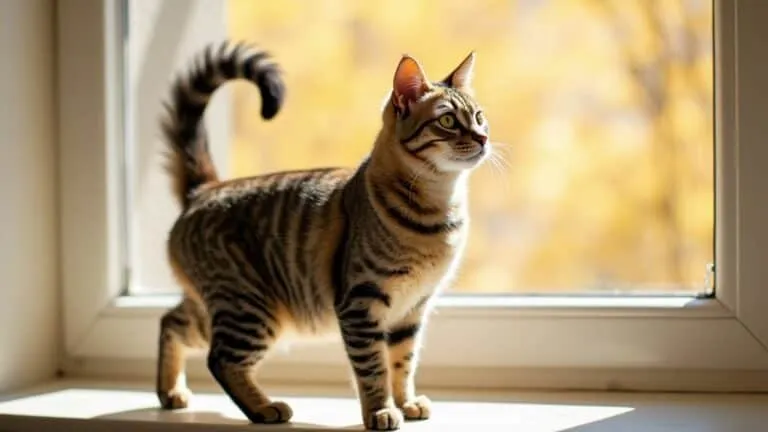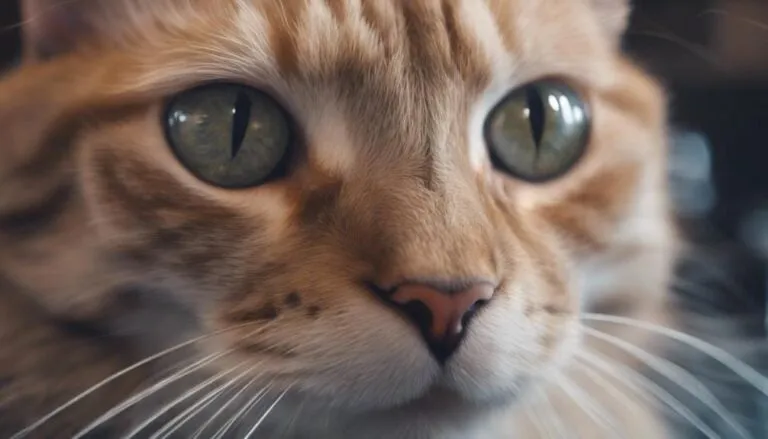The Best Fluffy Pancakes recipe you will fall in love with. Full of tips and tricks to help you make the best pancakes.

Have you noticed small bumps on your feline friend's chin lately? Wondering how to tackle cat acne effectively without causing distress?
Understanding the step-by-step process to clean your cat's acne can be crucial for their skin health and overall well-being. By following a systematic approach and incorporating preventive measures, you can ensure your cat stays comfortable and acne-free.
Let's explore the essential steps together to help your furry companion maintain a healthy complexion.
Key Takeaways
- Understand causes like keratin overproduction and poor grooming habits.
- Identify symptoms like black spots and behavior changes early.
- Prepare by gathering supplies and creating a calm environment.
- Follow a step-by-step process using gentle cleaning methods and monitoring regularly.
Understanding Cat Acne Causes
Cat acne in felines is primarily triggered by an overproduction of keratin, leading to the blockage of hair follicles and subsequent skin inflammation. When excess keratin accumulates around the hair follicles on a cat's chin, it can mix with sebum, an oily substance produced by the skin, creating a plug that obstructs the follicle. This blockage can result in the formation of blackheads, pimples, or pustules on the cat's chin.
Factors such as poor grooming habits, heightened sebum production, and compromised immune function can exacerbate this condition. The exact cause of why some cats are more prone to acne than others isn't entirely clear, but genetics, environment, and immune responses likely play a role.
Understanding these underlying causes can help in devising effective prevention and treatment strategies for managing feline acne and promoting skin health in cats. By addressing the root causes, such as regulating sebum production and maintaining proper grooming practices, you can help alleviate your cat's acne and ensure their skin remains healthy.
Identifying Cat Acne Symptoms
When observing your feline companion's chin area, watch out for signs such as blackheads, red pimples, or inflamed bumps as potential indicators of cat acne. Cat acne symptoms are crucial to identify early for effective management.
Here are common clinical signs associated with feline chin acne:
- Small black spots on your cat's chin
- Red pimples or bumps in the affected area
- Greasy or dirty appearance on the chin
- Crusty, painful lesions or nodules in severe cases
- Behavior changes like increased scratching or discomfort when touched on the affected area
Noticing these symptoms promptly can help prevent complications and ensure your cat receives the necessary care. Keep a close eye on your cat's skin, especially the chin area, to catch any signs of feline acne early on. Early intervention is key to maintaining your cat's skin health and overall well-being.
Preparing for Cat Acne Cleaning
After identifying the symptoms of cat acne on your feline companion's chin, the next step is to ensure you have the necessary supplies and a calm environment for preparing to clean the affected area.
To treat cat acne effectively, gather supplies like warm water, mild pet shampoo, soft cloths, and antibacterial wash. Create a soothing atmosphere by providing access to food and water, as well as minimizing distractions to reduce stress.
To improve hygiene and address the skin condition, use Medical Wipes or a warm compress to gently clean your cat's face before starting the treatment. Taking these steps can help reduce inflammation and prevent your cat from scratching the affected area. Remember to avoid harsh chemicals and human skincare products, as they can worsen your cat's condition.
Step-by-Step Cat Acne Cleaning Process
To initiate the step-by-step process for cleaning your cat's acne, begin by gently wiping your feline's chin with a warm, damp washcloth to soften the skin and open up the pores.
Follow these steps to effectively clean your cat's acne:
- Use a cat-specific antibacterial wash or chlorhexidine solution to cleanse the affected area, avoiding alcohol or peroxide-based products.
- Pat the chin area dry after cleaning to prevent moisture buildup, which can worsen acne.
- Consider applying a benzoyl peroxide gel or cream as directed by your vet to help kill bacteria and reduce inflammation.
- Monitor your cat's chin regularly and follow your vet's recommendations for ongoing care and maintenance to manage cat acne effectively.
Preventing Future Cat Acne Outbreaks
To prevent future outbreaks of cat acne, consider implementing a regular cleaning schedule for your feline's chin area to effectively remove excess oil and dirt that may contribute to acne formation. Additionally, using stainless steel or ceramic bowls can help prevent bacterial contamination, reducing the risk of acne flare-ups. Monitoring your cat's stress levels and providing a calm environment is crucial as stress can trigger acne in cats. Consult with your veterinarian for guidance on cat-safe grooming practices and products to maintain a healthy chin and prevent future acne. Incorporating Omega 3 fatty acid supplements into your cat's diet can promote healthy skin and reduce the likelihood of acne outbreaks. By following these steps and maintaining a proactive approach to your cat's skincare, you can help minimize the occurrence of cat acne and keep your feline friend comfortable and healthy.
| Prevention Tips | Benefits |
|---|---|
| Regular cleaning schedule | Removes excess oil and dirt contributing to acne formation |
| Stainless steel/ceramic bowls | Prevents bacterial contamination leading to acne outbreaks |
| Monitor stress levels | Reduces the risk of stress-induced acne flare-ups |
Frequently Asked Questions
Can Cat Acne Be Contagious to Other Pets in the Household?
Cat acne is usually not contagious to other pets. Preventive measures include proper hygiene, like avoiding shared grooming tools. Consult a veterinarian for advice on treatment options and grooming tips. Consider environmental factors and health considerations when managing your cat's acne.
Are There Any Specific Breeds of Cats That Are More Prone to Developing Acne?
Certain cat breeds like Persians and Himalayans are more predisposed to developing acne due to genetic factors. Environmental triggers, grooming habits, hormonal changes, skin allergies, dietary influences, immune system health, age, and hormonal imbalances can also contribute.
Can Stress or Anxiety Contribute to the Development of Cat Acne?
When it comes to cat acne, stress triggers, anxiety factors, hormonal imbalances, environmental changes, diet influences, skin care, grooming habits, allergy connections, and behavioral changes can all play a role. Consulting with a vet is crucial.
Are There Any Natural Remedies or Alternative Treatments for Cat Acne?
For cat acne, explore natural options like herbal remedies, home treatments, and diet changes. Consider a holistic approach with essential oils, healing herbs, and skin care. Alternative therapies can aid in prevention and management.
How Often Should I Clean My Cat's Acne to Prevent It From Worsening?
To prevent worsening, clean your cat's acne 2-3 times weekly. Use gentle cleansers, avoid squeezing pimples, and maintain proper hygiene. Regular grooming routine, good skin health practices, and consulting a vet for severe cases ensure effective acne treatment and prevent bacterial growth.
Conclusion
In conclusion, by understanding the causes, identifying symptoms, and following a step-by-step cleaning process, you can effectively manage and prevent your cat's acne.
Remember to prioritize proper hygiene, seek veterinary care when necessary, and take preventive measures to ensure your furry friend's skin health.
With dedication and care, you can keep your cat comfortable and acne-free for a happy and healthy life.








